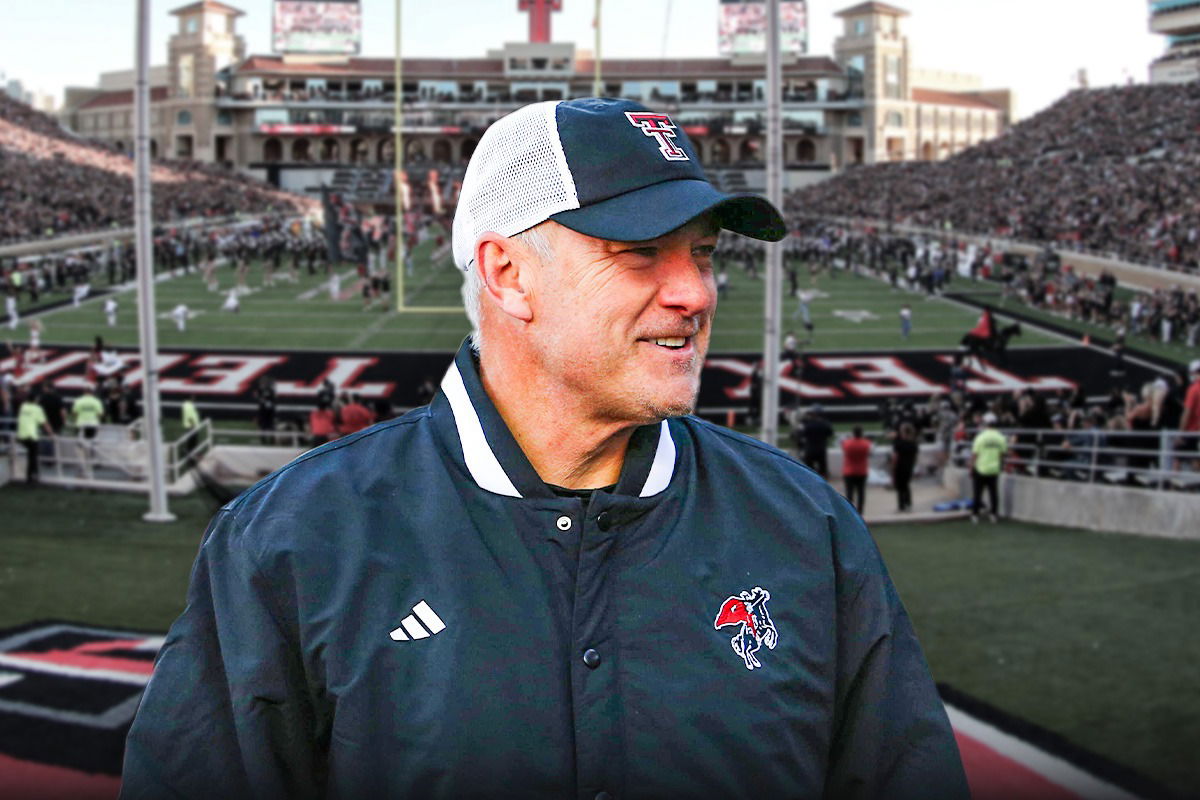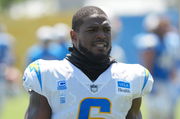

If you tuned into college football last weekend, you probably noticed one message louder than any touchdown cheer: “Save college sports.”
Watch What’s Trending Now!
It wasn’t a grassroots chant. It was a coordinated campaign. From ESPN’s College GameDay to Fox’s Big Noon Kickoff, every major broadcast carried the slogan. The urgency was manufactured, the airtime bought. And behind it stood one man: Cody Campbell.
Campbell isn’t your typical booster. A former Texas Tech offensive lineman who made his fortune in oil and gas, he now sits on a personal net worth of about $5 billion. In 2025, he gifted $25 million to renovate Texas Tech’s stadium. But philanthropy is just the surface. Campbell has stepped fully into politics, pouring money into a 501(c)(4) campaign and lobbying Congress to remake the business model of college sports.
ADVERTISEMENT
The answer is Cody Campbell – a billionaire Texas Tech booster and former football player who made his fortune in oil and gas. With a net worth estimated at around $5 billion, he’s far from your typical donor. Campbell has moved well beyond writing checks. Back in December, the Texas Tech alum gifted $25 million to renovate the southern end of Jones AT&T Stadium. But philanthropy is just the beginning. Now, he’s leveraging his wealth and influence to shape policy, pushing Congress directly to reshape the very structure of college sports. So, what exactly does he want?
And his proposal is sweeping: end the patchwork of conference TV deals and sell all college sports rights as one national package—a college version of the NFL.
ADVERTISEMENT
The campaign playbook
Campbell’s ads don’t hide the stakes:
“Dramatic changes are forcing nearly every athletic department into the red, threatening cuts and putting women’s sports and Olympic dreams at risk.”
The solution? Update the Sports Broadcasting Act of 1961, which gave pro leagues an antitrust exemption to pool their media rights. Campbell wants college sports to get the same treatment.
ADVERTISEMENT
The pitch is simple:
Top Stories
NFL Suspends Chargers’ Denzel Perryman for Two Games Over Cowboys Incident

Clark Hunt Admits Being Pressured to Leave Arrowhead After Chiefs Offered $2.4B Proposal

American Gymnastics Coaches Tied to Training Olympians Face Suspensions

Steelers Confirm $45M Punishment for DK Metcalf After NFL Suspended WR for 2-Games

Sean McDermott Confirms if Bills Will Sign a QB Amid Josh Allen’s Injury Concerns

FOX Earns Rare Moment of Respect as NFL Honors NASCAR Legend Live on Air

Goal: One national TV rights deal for all schools.
Current system: SEC, Big Ten, and others negotiate separately, leaving smaller schools behind.
Promised impact: Richer distributions to struggling programs, more funding for women’s and Olympic sports.
- Audience: Ads reach millions of fans
It sounds noble. But it also centralizes enormous power in the hands of those who bankroll the campaign. And Campbell isn’t alone.
ADVERTISEMENT
Boosters call the shots
For years, boosters operated in the background of college sports, quietly bankrolling stadiums, scholarships, and coaching salaries. But everything changed in 2021 with the arrival of Name, Image, and Likeness (NIL) rights. Overnight, boosters gained a direct pipeline to athletes and with it, a whole new kind of leverage.
By 2024–25, experts predicted the NIL market for college football would explode to $1.67 billion. Texas quarterback Arch Manning racked up $6.8 million through deals with brands like Red Bull, Uber, and Raising Cane’s, while Carson Beck’s transfer to Miami included an NIL deal valued at $3-4 million, with potential incentives bringing the total to approximately $6 million. On top of that, schools themselves now pay players directly, with payouts capped at $20.5 million per program, while collectives pool booster money at high levels.
ADVERTISEMENT
And right in the middle of this new power structure is Cody Campbell, whose outsized role shows just how far boosters can push the future of college sports. Campbell, appointed Chairman of the Texas Tech University System Board of Regents in 2025, has donated $25 million for athletic facility upgrades, but he’s far from the only game-changer. Other boosters are redefining the rules:
John Ruiz (Miami’s NIL King): Signed over 100 athletes to $7 million in deals through LifeWallet. He courts media attention, challenges NCAA rules in court, and raises athlete visibility.
Phil Knight (Oregon’s Strategic Hand): Shapes Pac-12 realignment, funds NIL initiatives, and positions Oregon as a competitive force in a shifting landscape.
Texas A&M Boosters (The Jimbo Fisher Effect): Backed a 10-year, $76 million contract for Fisher and contributed $19.3 million toward his buyout through 2031, showing how coaching contracts dominate priorities.
With these power moves, the question arises: who really controls college sports today: the NCAA, conferences, or boosters with billions to spend?
ADVERTISEMENT
How media rights fuel inequality
Media rights fuel the entire economy of college sports, and they’re also at the heart of one of its biggest divides. Every conference cuts its own TV deal, and the difference between the haves and the have-nots is staggering.
SEC: 10-year deal with ESPN worth ~$3 billion, averaging $300 million per year.
Big Ten: Seven-year agreement with Fox, CBS, and NBC totaling at least $7 billion, with clauses that could increase the value if Notre Dame joins.
Smaller conferences like the American Athletic Conference (AAC) earn far less, with a media rights deal totaling $1 billion split among member schools.
ADVERTISEMENT
The result: Power 5 schools earn much more from media rights than Group of Five programs, with per-school distributions often exceeding $50–60 million, while smaller conferences like the AAC receive far less per school. That financial imbalance drives elite facilities, top-tier coaches, and robust recruiting pipelines for wealthy programs, leaving smaller schools scrambling to compete. Boosters pour gasoline on the fire, bankrolling NIL deals, stadium upgrades, and even lobbying efforts to tilt the playing field further. Yet reform remains gridlocked: Power Five conferences fiercely protect their revenue, and the NCAA has long resisted changes to the Sports Broadcasting Act. For now, the media rights war has no truce, and it’s just one battle in a much larger struggle over who really controls the future of college sports.
The political game behind college sports
College sports aren’t just about wins and losses anymore; they’ve become a political battlefield. Wealthy boosters are stepping out from behind the scenes and into the spotlight, using their fortunes to shape policy, sway public opinion, and protect their investments. Figures like Cody Campbell are running TV ads during major broadcasts, lobbying Congress, and even serving on presidential commissions on college athletics. Campbell is also close to President Donald Trump through the America First Policy Institute and has been advising the administration on college sports policy issues. Their efforts look less like traditional philanthropy and more like PAC‑style campaigns aimed at fans, alumni, and lawmakers to influence the future of media rights, revenue sharing, and player compensation.
ADVERTISEMENT
The timing is no coincidence. College finances are shifting fast. Headlines about “Big Ten schools bleeding red ink” often overstate the problem; only a handful are actually running deficits, but budgets are undeniably under pressure. The real reason: players are finally getting a share of the money through NIL deals and direct payments. Where schools and boosters once kept all the cash, they now have to share it with athletes. Campbell‑style lobbying often frames this redistribution as a threat to the survival of college sports, though in reality, the crunch stems from decades of NCAA caps that artificially suppressed athlete compensation.
The lobbying game raises profound questions: Who gets to define the future of college sports? The NCAA, the conferences, or billionaire backers with prime‑time airtime and Congress on speed dial? As these campaigns ramp up, the balance of power is shifting, and the biggest question lingers: Who, if anyone, truly speaks for the players?
The hidden risks of booster power in college sports
Wealthy boosters are no longer just donors; they’re shaping the rules of the game. While their money can elevate programs, it also brings risks:
Fans and stakeholders question whether boosters are prioritizing money and self-interest over the integrity of the college game.
A handful of wealthy boosters wield outsized influence on NIL rules, athlete compensation, and media rights, often sidelining smaller programs.
With Congress divided and the NCAA weak, boosters step into policymaking roles once reserved for governing bodies.
Boosters deploy lobbying, media buys, and political campaigns, turning college sports into a PAC‑style battleground.
Deep-pocketed programs invest in elite facilities, coaches, and recruiting pipelines, leaving smaller schools further behind.
Looking Ahead: If this trend continues, we could see competing booster-funded campaigns on major broadcasts, direct lobbying that influences federal NIL and tax laws, and further consolidation of power among the richest donors. The result? Decisions in college sports may increasingly reflect the interests of billionaires rather than athletes, schools, or fans. This isn’t just a battle over TV contracts; it’s a struggle for who will truly control the future of college football.
ADVERTISEMENT
ADVERTISEMENT
ADVERTISEMENT

